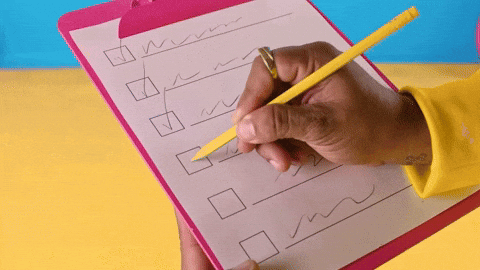Article created on May 21, 2025, article updated on May 22, 2025, by Sandra Sánchez

Content:
- Understanding the Basics: Two Ways to View the Past
- When to Use the Preterite: Completed Actions & Defined Moments
- When to Use the Imperfect: Setting the Scene & Ongoing Actions
- Time Markers: Your Secret Weapon
- Verbs That Change Meaning Between Tenses
- Effective Learning Strategies: Beyond Memorization
- Recognizing Common Patterns: The Dance of Tenses
- Frequently Asked Questions
- Sources and Aditional Reading
- Your Spanish Time-Travel Toolkit: Practical Steps Forward
Understanding the Basics: Two Ways to View the Past
Here’s the straight talk: Spanish doesn’t just have “past tense” like English does. Instead, it offers two different lenses for viewing past events—the preterite and the imperfect. Think of the preterite as a camera taking a snapshot (completed actions) and the imperfect as recording a video (ongoing or habitual actions).
The fundamental distinction isn’t about when something happened, but how you’re conceptualizing the action:
- Preterite (pretérito indefinido): Focuses on completed actions with clear beginnings and endings
- Imperfect (pretérito imperfecto): Describes ongoing, habitual, or background actions in the past
As María Gonzalez, Professor of Spanish Linguistics at Universidad Complutense de Madrid, explains: “English speakers struggle with these tenses because English doesn’t make this grammatical distinction. You must train your mind to see past events through this new conceptual framework.“
When to Use the Preterite: Completed Actions & Defined Moments
The preterite captures actions that:
- Happened once at a specific moment
- Had a clear beginning and end
- Interrupted ongoing actions
- Occurred in a sequence
Key Indicators for Preterite Use:
- Specific dates/times: Ayer comí paella (Yesterday I ate paella)
- Counted occurrences: Llamé tres veces (I called three times)
- Beginning or end of actions: Empezó a llover (It began to rain)
- Sequential actions: Entré, vi la televisión y me dormí (I entered, watched TV, and fell asleep)
Pro Tip: In storytelling, the preterite often represents the main events that move the narrative forward.

When to Use the Imperfect: Setting the Scene & Ongoing Actions
The imperfect portrays actions that:
- Were ongoing or in progress
- Happened habitually or repeatedly
- Set the scene or provided background information
- Described physical, emotional, or mental states
Key Indicators for Imperfect Use:
- Habitual actions: Siempre comía pasta los domingos (I always ate pasta on Sundays)
- Ongoing states: Estaba cansado (I was tired)
- Age descriptions: Tenía diez años (I was ten years old)
- Scene setting: Era un día soleado (It was a sunny day)
Pro Tip: Think of the imperfect as painting the background of your story, while the preterite captures the main events.
Time Markers: Your Secret Weapon

Certain time expressions often signal which tense to use:
| Preterite Markers | Imperfect Markers | Context-Dependent Markers | English Translation Examples |
|---|---|---|---|
| ayer (yesterday) | a menudo (often) | cuando (when) | Yesterday I went to the store |
| anteayer (day before yesterday) | a veces (sometimes) | mientras (while) | I used to go to the beach often |
| el [day] pasado (last [day]) | todos los días (every day) | durante (during) | When I arrived, she was cooking |
| una vez (one time) | generalmente (generally) | siempre (always) | I ate dinner once at that restaurant |
| en ese momento (at that moment) | normalmente (normally) | nunca (never) | She normally wore glasses |
Important: While time markers can help, they’re not foolproof rules. The conceptual distinction—completed vs. ongoing/habitual—remains the most reliable guide.
Verbs That Change Meaning Between Tenses
Some Spanish verbs dramatically change meaning depending on whether they’re in the preterite or imperfect tense. These are crucial to memorize:
For example:
- Conocía a María (I knew María) vs. Conocí a María (I met María)
- No podía abrir la puerta (I couldn’t/was unable to open the door) vs. No pude abrir la puerta (I failed to open the door/wasn’t successful)
Effective Learning Strategies: Beyond Memorization
Let’s be honest: truly mastering these tenses requires more than memorizing rules. Here are strategies that work:
1. Context-Based Learning
Rather than studying isolated verb forms, learn them in meaningful contexts. Read short stories, watch Spanish shows with subtitles, or listen to songs that use both tenses. Notice how native speakers make these choices intuitively.
2. The Shadow Technique
An effective approach demonstrated by Ana Martínez, Spanish language coach: “Shadow authentic Spanish dialogue by repeating it exactly as you hear it. This trains your brain to recognize natural patterns of preterite and imperfect usage without overthinking the rules.”
3. Visualization Practice
Create mental images for each tense:
- For preterite, visualize a clear photograph of a completed action
- For imperfect, imagine a blurry, continuous video sequence
4. Narrative Building
Write a daily journal in Spanish, deliberately describing:
- Specific events that happened (preterite)
- How you felt, what the weather was like, and what you typically did (imperfect)
Case Study: Miguel, an English speaker who struggled with these tenses for years, made a breakthrough when he started recording 1-minute voice memos about his day in Spanish. “The act of speaking forced me to make quick decisions about which tense to use, and over time, it became more instinctive,” he explains.

Recognizing Common Patterns: The Dance of Tenses
The preterite and imperfect often work together in Spanish storytelling, creating a rich narrative texture that English doesn’t capture as clearly.
Pattern 1: Interruptions
Imperfect sets the ongoing scene, preterite introduces the interruption:
Dormía (imperfect) cuando sonó (preterite) el teléfono.
I was sleeping when the phone rang.
Pattern 2: Background and Events
Imperfect provides context, preterite delivers action:
Hacía (imperfect) mucho calor y la gente caminaba (imperfect) lentamente. De repente, un niño gritó (preterite) y todos se detuvieron (preterite).
It was very hot and people were walking slowly. Suddenly, a child screamed and everyone stopped.
Pattern 3: Mental Shifts
Imperfect describes prior mental state, preterite captures the moment of change:
No quería (imperfect) ir, pero finalmente quise (preterite) intentarlo.
I didn’t want to go, but finally I decided to try it.
According to a study by the Institute of Hispanic Linguistics, these three patterns alone account for approximately 68% of preterite-imperfect usage in conversational Spanish.
Frequently Asked Questions
What’s the fastest way to know which tense to use in conversation?
Ask yourself: “Am I talking about a specific, completed event with clear boundaries?” If yes, use preterite. If you’re describing ongoing conditions, repeated actions, or setting the scene, use imperfect. Practice making this decision quickly with everyday situations: “I ate breakfast” (preterite) vs. “I was eating breakfast when…” (imperfect).
How do natives actually use these tenses in everyday speech?
Native speakers don’t consciously think about grammatical rules—they choose based on how they conceptualize the action. Research shows regional variations exist; Caribbean Spanish speakers tend to use the imperfect more frequently where other regions might use preterite. The most authentic approach is immersing yourself in content from the specific Spanish-speaking region you’re most interested in.
What about verbs that seem to break the rules?
Some verbs like “ser” (to be) can appear in either tense depending on the speaker’s intent. In “La fiesta fue divertida” (The party was fun), the preterite suggests the entire party as a completed event. In “La fiesta era divertida” (The party was fun), the imperfect describes the ongoing atmosphere. These aren’t exceptions but reflect the same conceptual distinction applied contextually.
Sources & Additional Reading
Practice Makes Perfect Spanish Past-Tense Verbs Up Close (Dorothy Richmond)
A Student Grammar of Spanish (Ronald E. Batchelor)
501 Spanish Verbs (Christopher Kendris, Theodore Kendris)
Modern Spanish Grammar (Juan Kattán-Ibarra, Christopher J. Pountain)
Your Spanish Time-Travel Toolkit: Practical Steps Forward
Mastering these tenses isn’t just about getting grammar right—it’s about gaining the ability to tell richer, more nuanced stories in Spanish. Here’s your action plan:
- Weekly narrative practice: Write a short paragraph about your past week using both tenses consciously.
- Tense-spotting exercise: Read Spanish content and highlight preterite verbs in one color, imperfect in another.
- Conversation challenges: Describe a childhood memory to a language partner, focusing on the interplay between tenses.
- Error analysis: Record yourself speaking, then review where you hesitated or made tense mistakes.
- Contextual flashcards: Create cards with full sentences rather than isolated verb forms.
Remember that making mistakes is an essential part of the learning process. According to language acquisition research, learners typically need to produce a grammatical structure incorrectly between 15-20 times before consistently getting it right.
As you continue your Spanish journey, how might mastering these tenses transform not just your grammar, but your ability to connect with Spanish speakers on a deeper cultural level? After all, the way we talk about the past reveals much about how we see the world.
¡Buena suerte con tu aprendizaje! (Good luck with your learning!)
Need a Personal Spanish Teacher?
Looking for a more personalized approach to mastering Spanish? Sandra Sanchez, the passionate and experienced teacher behind Spanish Barcelona, offers one-on-one and group lessons tailored to your needs and goals.
Whether you’re a beginner or looking to refine your skills, Sandra’s customized lessons will help you gain confidence and fluency in no time.
📌 Ready to get started? Leave your request today, and let’s make Spanish learning fun and effective for you!

